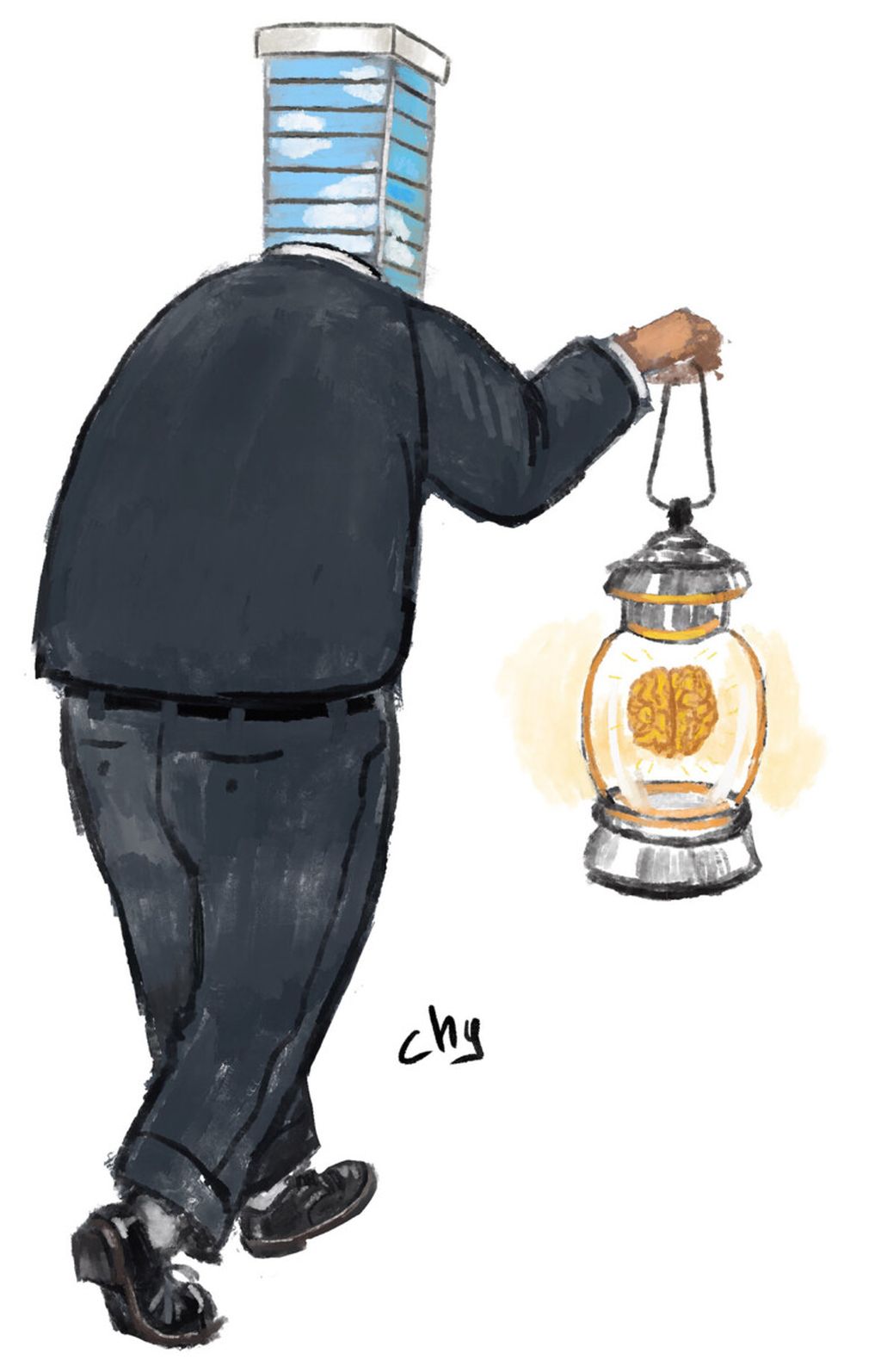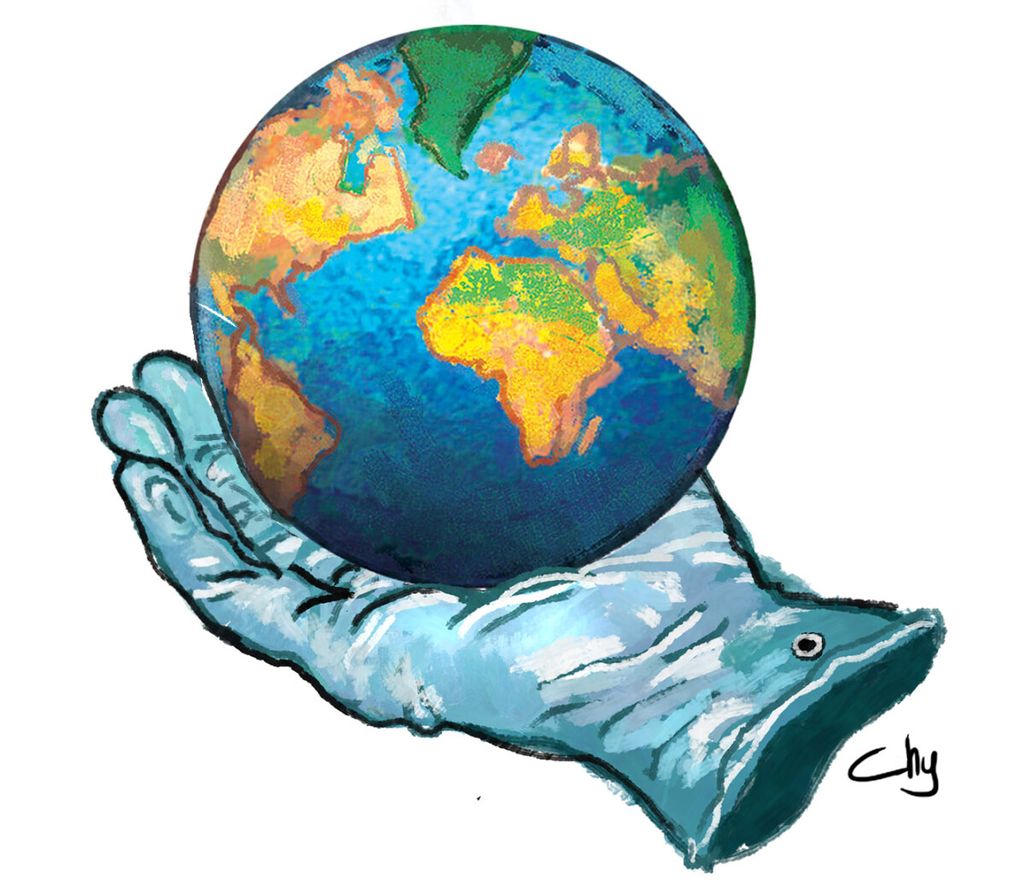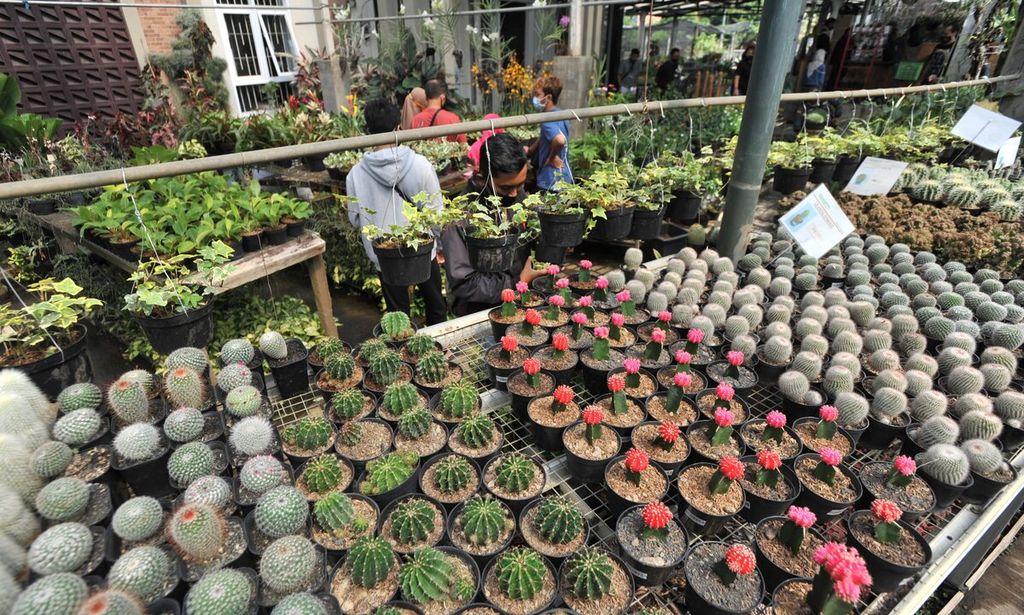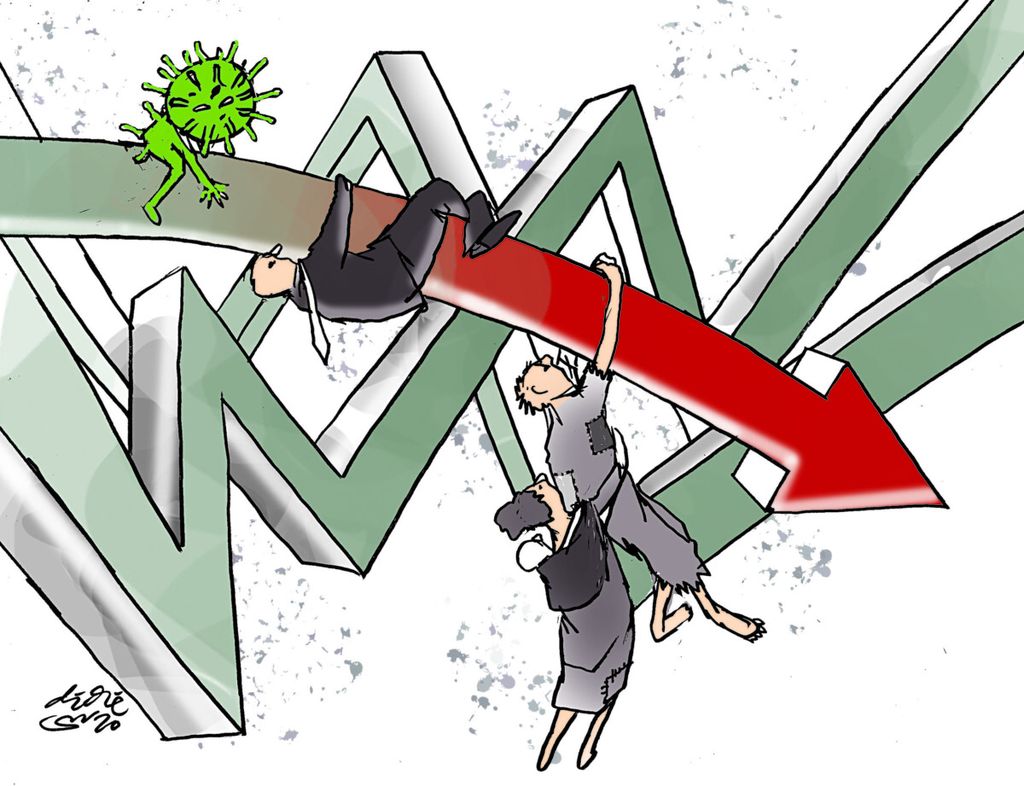Growth Prospect for 2021
Widespread demonstrations and riots in several European countries, such as the Netherlands and Denmark, protesting against area quarantine, are a lesson to other countries.

Widespread demonstrations and riots in several European countries, such as the Netherlands and Denmark -- which have among the highest levels of prosperity and happiness in the world -- protesting against area quarantine, are a lesson to other countries.
The facts show that even in developed countries, many people live from small-scale businesses that rely on mobility.
This explains why not all European countries, for example France, rushed to impose a second area quarantine to prevent the spread of a new variant of Covid-19 that is thought to be more contagious.
Global growth correction
In this regard, the President of the European Central Bank Christine Lagarde remains optimistic and predicts that the new wave of lockdowns will only delay economic recovery in the eurozone, but will not thwart it. In the fourth quarter of 2020, the eurozone experienced positive growth of 0.7 percent. However, with the area quarantine policy due to the new variant of Covid-19, the possibility of a double dip recession will increase.
The eurozone is expected to contract 6.8 percent in 2020, and for 2021 it will be corrected by 1 percentage point to 4.2 percent. Meanwhile, the US economy with its new government is expected to grow 5.1 percent.
Also read: 2021: Between Pandemic and Economic Recovery
On another occasion, chief economist of the International Monetary Fund (IMF) Gita Gopinath remained cautiously optimistic despite realizing that the new variant of Covid-19 could potentially endanger the world\'s economic recovery, especially in Europe.
Because the world economy is already in a severe slump, from the low base there will be a surge (low base effect). The IMF forecasts global growth in 2021 to reach 5.5 percent, a 0.3 percent increase from the previous prediction in October last year. This depends on the race between the progress of the vaccination program and the rate at which viruses mutate. For 2022, with a higher world gross domestic product (GDP) basis, growth is expected to lower again, closer to the normal pattern of around 4.2 percent.

What about in Indonesia?
Statistics Indonesia (BPS) announced that Indonesia\'s economic growth in the fourth quarter of 2020 was minus 2.19 percent compared to minus 3.49 percent in the previous quarter.
This suggests that there is already a movement towards the normal pre-pandemic growth pathway situation. However, quarterly growth of minus 0.42 percent indicates the pace of recovery is already sloping after surging (5.05 percent) in the preceding quarter.
The recovery is progressing smoothly because from a demand perspective there is a shift from experiential consumption (leisure) such as travel and food to durable household items. In the pre-pandemic period, the two were complementary, either alternately or together.
Also read: Vaccines and Economic Recovery
The normal pattern of Maslow\'s hierarchy (1943) usually starts with the fulfillment of basic needs. After this stage is fulfilled, the need for actualization begins to arise so that consumption begins to shift to durable goods, including household/electronic equipment.
For Indonesia, the pattern is slightly different, mainly due to an injection of income from the commodity bonanza in the 2004-2012 period. The commodity bonanza and the proliferation of social media developments have resulted in a leap which shortens the duration of consumption of durable goods as the main means of actualization and coincides with the consumption of experience or lifestyle (leisure).
However, leisure consumption can also shift the portion of durable goods as a symbol of a well-developed middle class, either because of the income effect or the substitution effect. Middle class actualization changes to a lifestyle or life experience (leisure), because it can instantly get comments/praise from peers, for example in WhatsApp groups. The development of the middle class in medium-size cities has contributed to this trend.
Also read: Vaccines and Economic Recovery
The impact is that growth was able to reach 6 percent, or even more, from 2004 to 2012. The end of the commodity bonanza does not necessarily eliminate this effect because it has become a new habit in which the shopping cycle is alternating or complementary, like two mutually reinforcing vectors. As a result, growth after the commodity bonanza can still be maintained at a steady level of 5 percent per year.
/https%3A%2F%2Fkompas.id%2Fwp-content%2Fuploads%2F2021%2F02%2F22e1b863-5ae4-4018-881e-5a4cb2413188_jpg.jpg)
Activity on one of the floors at the Tanah Abang Wholesale Market Center, Central Jakarta, Wednesday (17/2/2021). The sluggishness of the economic sector due to the Covid-19 pandemic which has lasted for almost a year is expected to gradually recover.
A shift due to a pandemic
The consumption pattern above shifted again when the pandemic began in March 2020. For about one year the community seems to have been adapting. Broadly speaking, the adaptive learning model from Hopkins (2007) postulates that society learns about the differences in the quality of two products. Which product will be rated as higher quality will depend on the information and perceptions of the environmental situation through adaptive learning.
In its implementation, for a pandemic situation in Indonesia, durable goods and leisure goods can be combined into one separate composite good, ala the utility function of the variable elasticity of substitution. The other good in the utility function is the need to stay healthy during the pandemic.
The increase in the portion of savings (average propensity to save) from 18.6 percent at the start of the March 2020 pandemic to 20.8 percent at the end of 2020 shows that there is purchasing power from various sources, including social assistance, which temporarily is not spent. This is due to deteriorating health perceptions as a result of the increase in daily positive cases after the long holidays at the end of October, Christmas and New Year.
In principle, the pandemic situation has changed the concept of leisure.
Based on the Consumer Confidence Index (IKK) survey from Bank Indonesia, this increase in the saving ratio occurred in all income groups.
The government has tried to tackle it with a micro-level social activity restrictions (PPKM) program. However, how the PPKM will affect saving behavior still has to wait for the next IKK survey. In principle, the pandemic situation has changed the concept of leisure. However, for the middle class, old habits are hard to leave, people feel the need to continue to do actualization and relaxation at the same time. Shopping and relaxation mix together, not visiting the mall, but going to stores that sell household hardware.
Also read: Notes on Turbulent 2020
In addition, the nearest sports shop and ornamental plant and fish sellers are also part of the weekend relaxation menu.

Visitors select plants at a flower shop in Batu City, East Java, Thursday (20/8/2020). Flower shops in the area are always busy with buyers in line with the increasing interest of residents to cultivate plants amid the pandemic.
The impact is that there has been a backflow from pure leisure consumption such as long-distance travel to consumption of durable goods. The durable goods purchasing index increased from a low of 66 in May 2020 to 79.8 in December, a significant increase of 21 percent.
However, in absolute terms the index is still below 100, which means it is still in the pessimistic zone. This indicates that there is still a large proportion of savings that are not spent just as a precaution.
Therefore, even though in January 2021 the purchasing manager index (PMI) figure reached 52.2, manufacturing growth is still contracted because it is not evenly distributed across all manufacturing sub-sectors. Based on the latest BPS data, the annual growth trend in the manufacturing sector is still negative, although the magnitude is improving.
Also read: Consumption and Savings Behavior
Annual growth in the third quarter of 2020 (yoy) improved from minus 6.19 percent in the second quarter to minus 4.31 percent in the third quarter and thereafter to minus 3.16 percent in the fourth quarter of 2020. Quarterly growth (q-to-q) was minus 0.38 percent in the fourth quarter of 2020, whereas in the previous quarter it was very impressive at 5.22 percent. This suggests the recovery is starting to slope because consumption of durable goods cannot occur continuously, but follows a cycle.
The contribution of the non-oil and gas manufacturing sector is around 17.6 percent of GDP so that its resilience is needed to maintain growth momentum. Another thing that has helped the manufacturing sector is the new habit of buying household utensils online. The imposing of a weekend lockdown that has been discussed recently has the potential to eliminate the contribution of the manufacturing sector in maintaining a V-style recovery, which, although it is flatter, at most has not turned into a W pattern.

Growth in 2021
With the sectors of transportation, trade, hotels and restaurants, which account for about 20 percent of GDP, still slumping, it seems that the pattern of economic recovery in 2021 will be different from the previous economic crisis.
The annual growth of the transportation sector in the fourth quarter of 2020 was minus 13.42 percent, a slight improvement from minus 16.71 percent in the previous quarter. Slightly improved, but still contracted. In the same period, the trade sector still contracted by 3.64 percent. These sectors are related to the mobility that is affected, especially by the concerns of its users.
The growth prediction for 2021 is likely to be corrected to around 3.2 to 3.6 percent.
The shift in consumption above is clearly not enough to push economic growth into the positive zone. GDP growth in the fourth quarter of 2020 still contracted by 2.19 percent (yoy) even though it had improved from minus 3.49 percent in the previous quarter. The quarterly growth of minus 0.38 percent also underlines a flatter V recovery pattern. Several sectors, such as information and communication services as well as health services, have indeed grown by 10.91 and 16.54 percent, thus providing partial compensation, but the proportion of both is only 5.81 percent of GDP.
Given such a situation, growth in the first quarter of 2021 is likely to remain in the negative zone, around minus 2 to minus 1 percent. The growth prediction for 2021 is likely to be corrected to around 3.2 to 3.6 percent.
Improvisation for recovery
Before the pandemic, the manufacturing sector along with the transportation, trade, hotel and restaurant sectors took turns or simultaneously generated cycle to drive growth.
This complementary cycle is expected to recover if the Covid-19 vaccination program runs smoothly. However, while waiting for the completion of the vaccination program, it is necessary to consider the micro travel bubble approach, which includes a health package, healthy and safe transportation back and forth to the destination and is accompanied by certified healthy accommodation in one package.
Also read: Welcoming the Year 2021
As an illustration, the Amtrak railway company in America, which has been unable to compete with interstate air and toll road transportation, is using the pandemic to build a new image of interstate rail transportation as a healthy lifestyle, including by providing rooms that are called bedroom and roomette for long distance travel.
/https%3A%2F%2Fkompas.id%2Fwp-content%2Fuploads%2F2019%2F11%2FAri-Kuncoro_75152262_1572887656.jpg)
Ari Kuncoro
The longer travel time is used as a branding for a more relaxed lifestyle enjoying the view of rural areas while still working (working from train), before arriving at the destination to continue working at a hotel (working from hotel/WFH).
Ari Kuncoro, Rector of University of Indonesia
This article was translated by Kurniawan Siswoko.